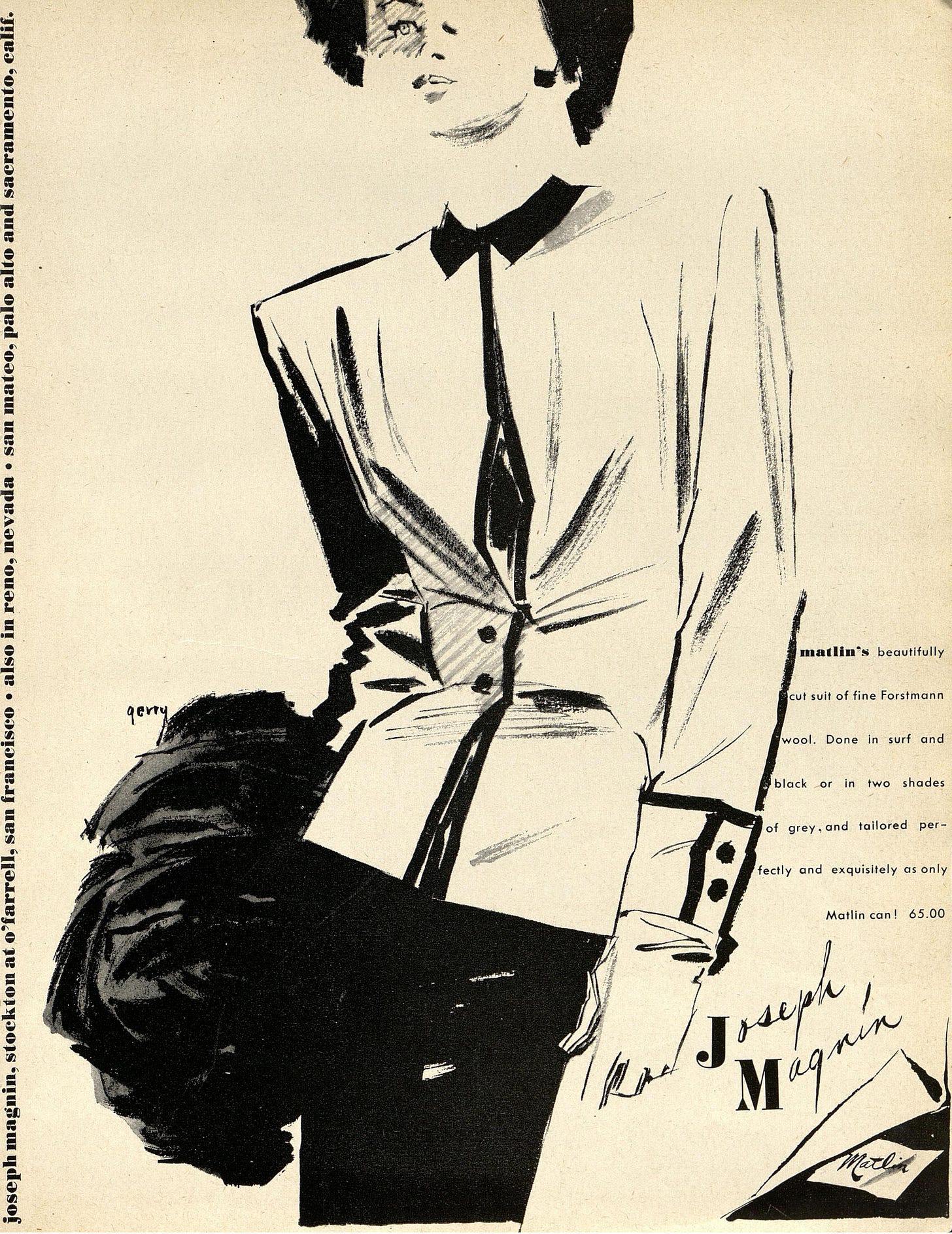Holiday shopping has long been the bane of many husbands’ existence, but only one department store in mid-century America went out of its way to court and placate these reticent shoppers. Joseph Magnin—the California-based high-end specialty department store not to be confused with I. Magnin (opened by Joseph’s father and a direct competitor)—every Christmas, starting in around 1949 and going until the mid-70s, opened the Wolves’ Den, a men’s only department conglomerating the best gift ideas from around the store.
Joseph Magnin had previously been barred from doing business with many luxury vendors by I. Magnin—companies knew that if they wished to continue selling to the established I. Magnin, then they could not sell to Joseph Magnin’s. Hence, for the first thirty years of its existence, Joseph Magnin was very much in the shadow and known as a “second-rate I. Magnin.” When Cyril Magnin took over leadership of his father Joseph’s stores following World War II, he was eager to make the store more upscale. To do so, Cyril courted a new customer: young, affluent women, both wives and unmarried, who saw themselves as sophisticated, glamorous, and highly fashionable. Among the many new ideas he instituted, Cyril rented out the vacant 4th floor of the flagship San Francisco location on Stockton and O'Farrell to an emerging designer and manufacturer, Eleanor Green, as her design studio and factory. Green and other young designers funneled new ideas into Joseph Magnin stores, generating media and consumer interest. Advertising, merchandising, and interiors were shifted to appeal to his desired customers, who flocked to the elegantly youthful stores. Soon Joseph Magnin was expanding into new markets—by the end of the decade, there were stores in San Francisco, Oakland, San Mateo, Palo Alto, Sacramento, and Reno.
Now that he had young postwar brides captivated, Cyril wanted to capture their husbands’ wallets too. The first press mention of the Wolves’ Den is from December 1949 in Women’s Wear Daily. This 600 square foot area was just for men—it was a space where men could come relax, eat and drink for free, and view products assembled from all over the store. This allowed husbands and fathers the opportunity to shop for their wives, mothers, sisters, and daughters (and likely, mistresses) in peace, away from any prying female eyes and in the company of other men much like themselves. “No effort at pretentious decoration” was attempted at that first Wolves’ Den, which was described as “something of the informal atmosphere of a ski hut. Heavy natural redwood slat partitions form curved sides against which small but sturdy green tables are placed,” covered with small gift ideas. Other walls were draped in red or green felt, with lingerie and negligees festooned across them. Hosting were two salesgirls and three models (the only women allowed)—those models maintained a continuous fashion show through the tables, primarily showing off expensive furs to the captive audience of whisky-drinking post-work males.
Keep reading with a 7-day free trial
Subscribe to Sighs & Whispers to keep reading this post and get 7 days of free access to the full post archives.





